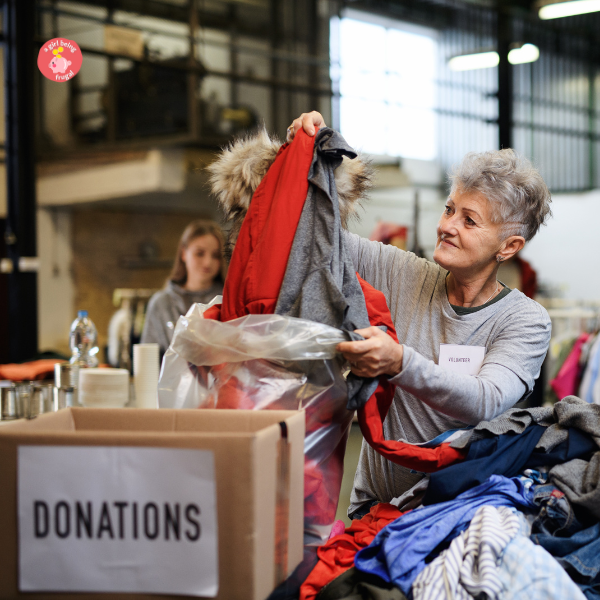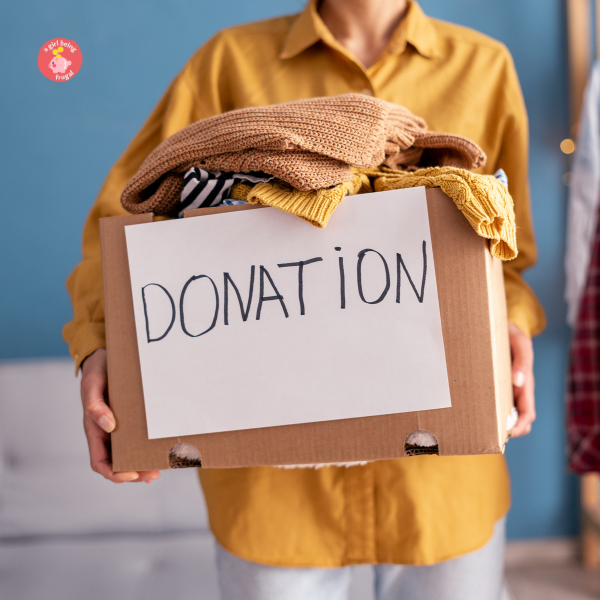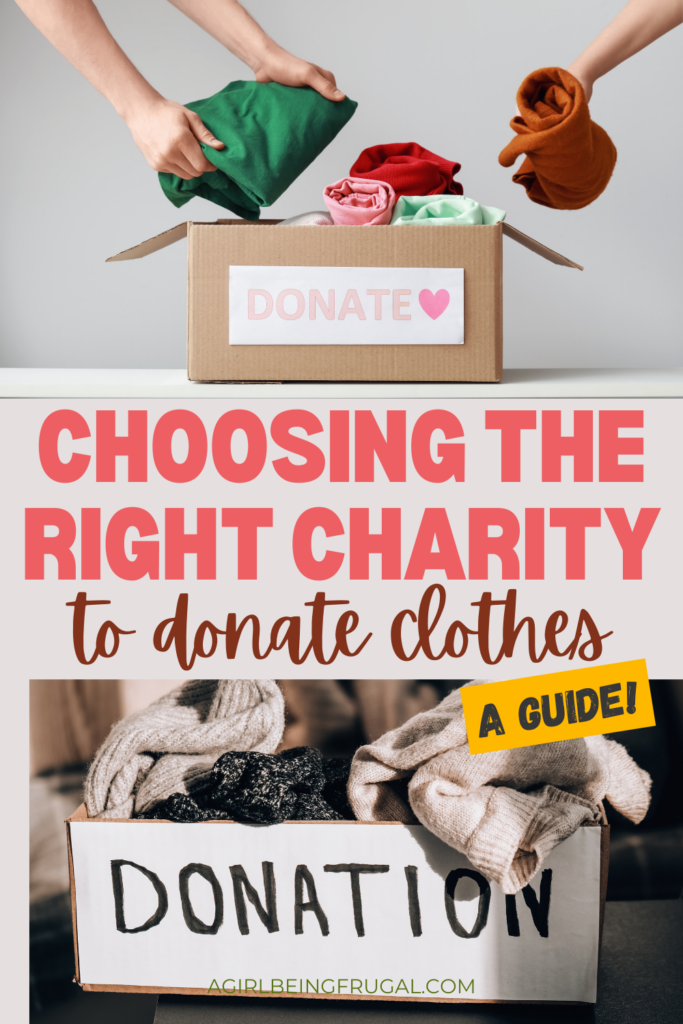Choosing the Right Charity to Donate Clothes: A Guide

Have you ever opened your wardrobe and been struck by the realization that you have more clothes than you really need? In today’s fast fashion and consumer-driven world, our closets can easily become cluttered with items that someone else could make better use of.
Enter the wonderful world of clothes donation, an act of generosity that not only clears your space but can significantly impact the lives of others. In this comprehensive guide, we’ll delve into the process of donating clothes, address common misconceptions, and provide insights on how to make your giving impactful and responsible.

Common Misconceptions about Donating Clothes
Diminishing the Myths
Donating clothes is an incredibly noble act, but there are often misunderstandings about the process that might deter people from engaging in such a philanthropic deed. A common myth is that donated clothes always reach those in need. However, it is vital to realize that not all items that are donated end up being sold or given to people struggling.
It is important to educate ourselves about the charity we choose to donate to, ensuring they operate ethically and transparently. Organizations such as Charity Navigator offer valuable insights into the workings of various charitable outfits.
So where exactly do our clothes go? Clothing donations are either directly given to those in need or sold at thrift stores and second-hand shops. The latter generates revenue for the organization, which is then used to fund its programs and initiatives.
Choosing the Right Charity to Donate Clothes
Here’s a table detailing various charities that collect used clothing and what happens to the clothes they receive:
| Charity/Organization | Collection of Used Clothing | Clothing Outcome |
|---|---|---|
| Green Drop | Collects used clothing | Donates to support various charitable causes |
| Salvation Army | Accepts used clothing | Operates thrift stores to fund charitable initiatives |
| Dress for Success | Receives used professional attire | Provides professional attire and development tools for women |
| One Warm Coat | Collects donated coats | Distributes to individuals in need, free of charge |
| Big Brother Big Sister Foundation | Accepts donated items | Funds mentoring programs for children |
| Planet Aid | Collects used clothing | Supports international development projects |
| The Arc | Accepts used clothing | Aids people with intellectual and developmental disabilities |
| Goodwill | Collects used clothing | Provides job training and employment services for people |
| American Red Cross | Accepts used clothes | Utilizes donations to support disaster relief efforts |
| Free the Girls | Collects used bras | Assists survivors of sex trafficking through entrepreneurship |
| Women Giving Back | Accepts used clothing | Distributes to help women and children in crisis |
| Neighborhood House | Collects used clothing | Supports community-based programs and services |
This table provides an overview of various organizations that collect used clothing and outlines the outcomes of what happens to the donated items.
Latest Clothes Donation Stats
The latest statistics regarding clothes donations reveal some interesting insights:
- Goodwill locations in New York and New Jersey alone collected over 38.6 million pounds of clothing, demonstrating the significant volume of donations. (Source: GoodwillNY/NJ.com)
- Only about 15% of used clothes and other textiles in the United States are reused or recycled, indicating a potential area for improvement in sustainability efforts. (Source: nist.gov)
- Only 28 percent of people donate used clothing, and a mere 7 percent purchase used clothing, showcasing the relatively low participation in donating and purchasing secondhand clothes. (Source: Treehugger.com)
- Approximately 38 to 48 percent of secondhand clothing in traditional retail channels is sold, highlighting the potential for a significant portion of donated clothing to find new owners. (Source: philanthropynewsdigest.org)
- On the contrary, a substantial percentage of unwanted clothes, about 85%, end up in landfills, indicating a need for better management of clothing waste. (Source: Nist.gov)
- Demand for winter coats saw more than a 50% increase in 2023, reflecting the growing need for donated clothing items, especially in times of rising poverty levels. (Source: usatoday.com)
- The average American throws away approximately 68 pounds of clothing and textiles each year, underscoring the importance of donating to reduce textile waste. (Source: NewYorkPost.com)
- The recycling rate for textiles in clothing and footwear was estimated to be 13 percent, signifying the potential for increased recycling efforts in the textile industry. (Source: epa.gov)
- As of 2023, about 29% of U.S. adults familiar with online clothing resale sites have used them, which indicates a growing interest in secondhand clothing among consumers. (Source: CivicScience)
- Almost half of Gen Z and millennial consumers (62%) consider the potential resale value of an item before purchasing it, highlighting a significant portion of younger demographics engaging in buying used clothing. (Source: BizWomen)
- Gen-Z consumers are the most apt to both buy (31%) and sell (44%) secondhand items, with millennials following closely behind. (Source: BCG via prnewswire.com)
- The willingness to buy secondhand apparel varies by age, with different age groups showing varying levels of willingness to purchase secondhand items. (Source: Statista via statista.com)
These statistics shed light on various aspects of clothes donations, from donation volumes and reuse rates to the environmental impact of textile waste and the demand for donated clothing items.

Choosing a Charity: Know Your Impact
Researching Charities
When choosing a charity to donate clothes to, it’s essential to do your research. Consider the cause that the organization supports and how they intend to use the donations. Look for reviews and ratings from other donors, as well as information on their financial practices and transparency.
Targeting Causes That Matter
Consider what causes are important to you and seek out charities that align with those values. For example, if you’re passionate about environmental issues, look for organizations that focus on sustainable fashion or upcycling clothing. If you want to support local communities, donate to charities that distribute clothes directly to those in need within your area.
What Clothing Items Should Not be Donated?
Sorting What’s Worth Sharing
While the intention behind donating is pure, not every item of clothing is suitable for donation. Items that are heavily damaged, stained, or torn should not be included in your donation pile. So, what do you do with these unsuitable pieces? Thankfully, there are responsible ways to dispose of them. Clothing recycling centers can often handle items that are unfit for donation, ensuring they are repurposed or recycled in an eco-friendly manner.
Should You Fold Clothes Before Donating?
The Presentation Proposition
The age-old question lingers: should clothes be folded or not before donation? The answer might surprise you. While it’s tempting to Marie Kondo to your garments into beautiful vertical stacks, many charities appreciate donated clothes delivered in bags or boxes. This allows them to more easily sort through the donations and distribute them as needed. Plus, folding can cause garments to wrinkle, which is an additional task for charity workers.

How to Pack Clothes for Donations
The Perfect Packing Guide
Packing clothes for donation efficiently and effectively can be a game-changer for charity organizations. Start by washing all items and ensuring they are in good, wearable condition. Then, consider using garbage bags for soft materials like clothes or blankets to save time and space. For more delicate items, a plastic storage bin or a reusable tote can help maintain the integrity of the clothing items.
Benefits of Donating Clothes
Making a Woven Impact
Donating clothes is an act that ripples with benefits, far and wide. Environmentally, it reduces waste in landfills and promotes the concept of a circular economy. Socially, donating to charities can provide much-needed clothing for individuals who lack these essentials. And for the donors, there’s the added bonus of potential tax deductions. It’s a win-win-win situation for all involved.
Conclusion: Wear Your Heart on Your Sleeve
Donating clothes is more than a spring cleaning ritual; it’s a gesture that embodies empathy and communal spirit. As you navigate the charity landscape, remember that every little bit counts. Research local organizations, understand their missions, and ensure the clothes you give have the best chances of reaching someone in need. A small act of charity can have an immeasurable impact, echoing through a larger, compassionate world.

